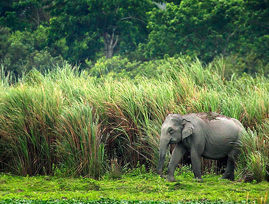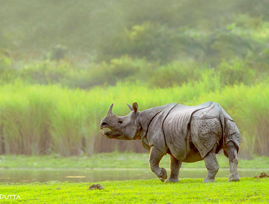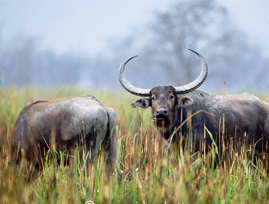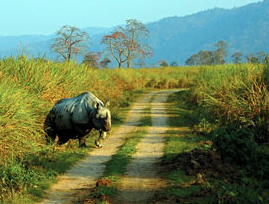 info@kaziranga-national-park.com
info@kaziranga-national-park.com + 9212777225 / 9212553107
+ 9212777225 / 9212553107

- Home/
- About Kaziranga /
- History of Kaziranga
History of Kaziranga National Park
History behind the Kaziranga Proposed Reserve Forest (1905)

Turned up in the Golaghat and Nagaon districts of the state of Assam, Kaziranga National Park dates back to the early 20th century, when an American lady ‘Baroness Mary Victoria Leiter Curzon’, who was the wife of Lord Curzon (The Viceroy of India), visited Kaziranga in the year 1904. During that period, Kaziranga had been far-famed for its huge population of rhinoceros, but during her trip in the region, she failed to see any rhinoceros in the forest instead only hoof marks was observed. Well, it was bruited that Balaram Hazarika, the famous Assamese animal tracker showed Baroness Curzon and told her about the urgent requirement for wildlife conservation. Then, she asked her husband to take the action for the preservation of a rhinoceros, which her husband did on November 4, 1904 whilst he suggested for creating a reserve in Kaziranga. Later on, formal documents of that proposal for the formation of the Kaziranga Reserve Forest dated in September, 1905. Therefore, on 1st June, 1905, the Kaziranga Proposed Reserve Forest was made with an area of 232 km2 (90 sq mi).
Kaziranga-A Reserve Forest and Game Sanctuary (1908-1939)

Soon after that, a proposal was made to extend the Kaziranga reserve forest towards the east that joins Bokakhat Dhansirimukh road. Locals were against this proposal as their rights like fishing, collection of cane, firewood and grazing would be in danger. Other than this, The European community of tea planters also objected to the same. Lastly, the park was extended by 152 km2 (59 sq mi) to the banks of the Brahmaputra River. In the year 1908, Kaziranga was made a Reserve forest. Later in the year 1916, it was named as the Kaziranga Game Sanctuar, which continued till 1938 whilst hunting was strictly prohibited and visitor’s entry was permitted.
Declaration of Kaziranga Wildlife Sanctuary and Kaziranga National Park (1950-1974)

In 1950, the Kaziranga Game Sanctuary was again renamed as Kaziranga Wildlife Sanctuary by P. D. Stracey (The forest conservationist), so as to exonerate the name of hunting ideas. Later in the 1954, the Assam Government passed the Rhinoceros Bill that enforced huge penalties for hunting rhinoceros. In 1968, the government of Assam passed the Assam National Park Act of 1968, for the creation of the national park. Finally, in the year 1974, 430 sq. Km of the area was added and declared as Kaziranga National Park.
Kaziranga as UNESCO World Heritage Site (1985-2005)

After the declaration of national park, Kaziranga was soon declared as a UNESCO World Heritage Site in the year 1985, for its unparalleled natural environment. After such a rapid expansion, the park celebrated its 100 years with much flash in the year 2005, in which the descendants of Lord and Lady Curzon were invited for the celebrations. Today, Kaziranga is a World Heritage Site and is probably one of the richest, most picturesque wildlife habitats of southern Asia.
The park celebrated its centenary with much fanfare in 2005, inviting descendants of Lord and Lady Curzon for the celebrations. Later in the year 2008, Kaziranga National park declared as Tiger Reserve by including Laokhowa & Burachapori Wildlife sanctuaries into its congregation.
 Share
Share Home
Home Packages
Packages Book Now
Book Now